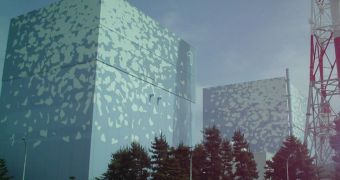The conclusions of a new study published today indicate that nuclear reactions restarted at the Fukushima Daiichi nuclear power plant about 12 days after the March 11 tremor and tsunami hit.
Using limited data collected from the power plant, University of Tokyo researcher Tetsuo Matsui shows that conditions were right for this process to occur. The information this new work is based on are derived from measurements of the ratio of cesium-137 and iodine-131 in the air around Fukushima.
Undoubtedly, a clearer picture of what went on inside the reactors will be made available to investigators as soon as they regain access into the contaminated buildings. For now, scientists will just have to make do with whatever data they can gather remotely.
The ratio measurements were collected at several key locations around the facility, and also in the seawater. In order to conduct the calculations, Tetsuo Matsui assumed that the four reactors which suffered the most damage were operating for between 7 months and a year.
Knowing for how long a reactor has been operational is of vital importance, as cesium-137 reaches an equilibrium inside nuclear reactors in a time frame equal to its half life, which is around 30 years.
Conversely, iodine-131 has a half life of 8 days, and therefore reaches equilibrium inside the reactor vessel within a little more than a week after criticality is obtained, Technology Review reports.
Therefore, it can be safely assumed that, for 30 years after a reactor is ignited, the rate at which cesium-137 is produced is increasing. Experts need to know that in order to calculate the cesium/iodine ratio, which is a very dynamic measure.
Following the magnitude 9.0 earthquake, and the tsunami that struck shortly afterwards, the Fukushima power plant was heavily damaged, and reactors 1 through 4 nearly destroyed by hydrogen explosions.
In some cases, such as building #2, fissionable material within fuel rods melted away, and created a pool of radioactive materials on the floor of the reactor's containment vessel. Using cesium/iodine ratio measurements, Tetsuo Matsui determined that these pools may have reignited nuclear fission.
The expert says that the data he collected indicates no nuclear restart at reactors 1 and 3. In the reactor #2 drain system, as well as in the reactor #4 cooling pond, the situation was more worrying. The expert found telltale signs of nuclear fission occurring.
“The data of the water samples from the unit [#]4 cooling pool and from the sub-drain near the unit [#]2 reactor show anomaly which may indicate, if they are correct, that some of these fission products were produced by chain nuclear reactions reignited after the earthquake,” the expert explains.

 14 DAY TRIAL //
14 DAY TRIAL //